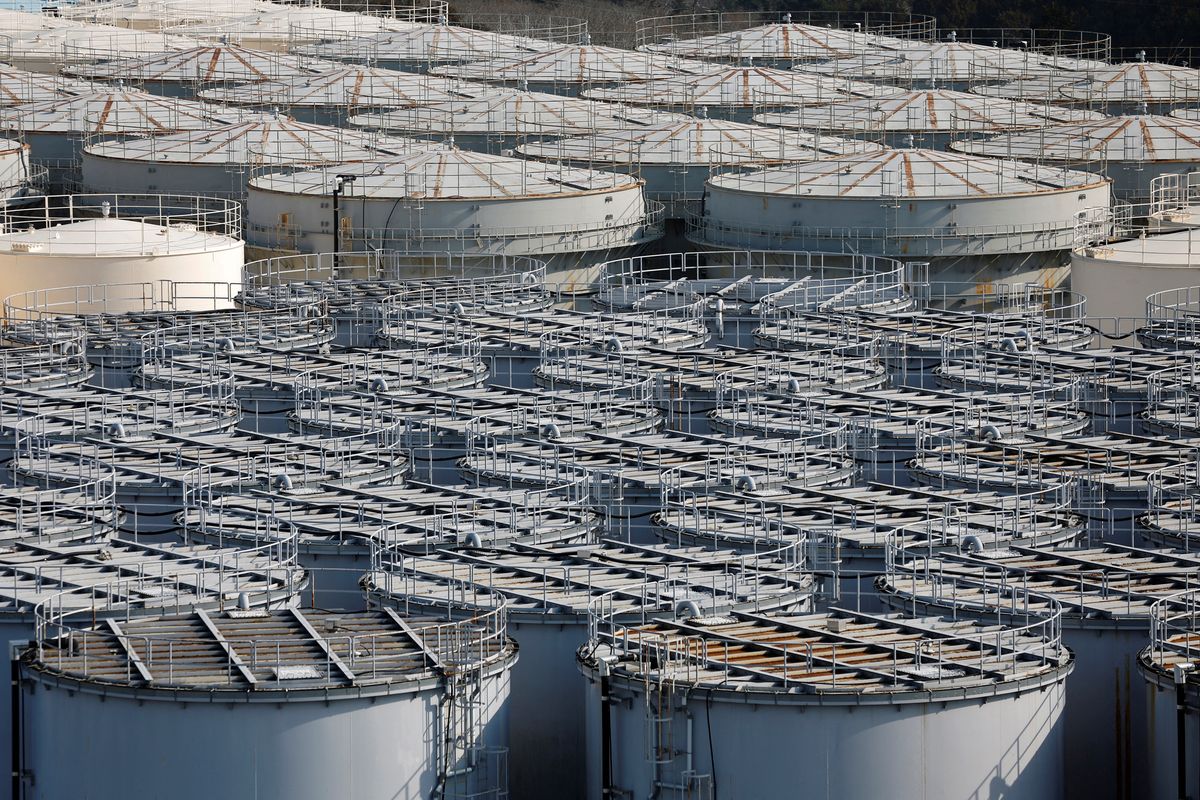Japan’s plan to dump treated nuclear wastewater into the ocean
In 2021, the country came up with a plan to release this water into the ocean over about 30 years.

A few minutes every morning is all you need.
Stay up to date on the world's Headlines and Human Stories. It's fun, it's factual, it's fluff-free.
The backstory: Back in 2011, Japan experienced a catastrophic earthquake that destroyed parts of the Fukushima Daiichi nuclear plant, including its cooling systems. Three of the reactors then ended up melting and releasing radiation. Newer tanks have been storing water since then, but they’ll reach capacity next year. The nuclear plant is still damaged and needs to be cleaned up, so that water has to go somewhere. What should Japan then do with the radioactive water that’s inside these tanks?
More recently: In 2021, the country came up with a plan to release this water into the ocean over about 30 years. The plan involves treating the wastewater and diluting it with a huge amount of seawater before releasing it into the Pacific Ocean about a kilometer from the coast via an underground tunnel. While the water would still be slightly radioactive, Japan says that it would be at safe levels. The process of treating the water is meant to remove the radioactive materials. But, Tokyo Electric Power Company Holdings (TEPCO) and the Japanese government said that tritium (a radioactive form of hydrogen) is the only radioactive substance that can’t be taken out of the water. In very small amounts, tritium is relatively safe. But there’s been a lot of pushback over this plan, especially from the fishing community and from nearby countries, too.
The development: On Monday, a trial for the plan began to see if all of the equipment and facilities would work as prepared. The testing should take about two weeks. Even though Japan has put together a fund to promote Fukushima seafood and compensate fishermen if there’s a sales drop over radioactivity concerns, fishing officials are still against the plan. The South Korean government has also decided to boost radiation detection of sea-related products and to inspect seawater loaded onto ships. In June, South Korea started investigating the origin labeling of Japanese fishery products. Hong Kong is also considering a change to its rules for labeling Japanese food if the wastewater plan goes through.
Key comments:
"The discharge of the nuclear-contaminated water into the ocean will have a huge impact on the entire human race," said Hideyuki Ban, a Japanese nuclear expert and co-director of the Citizens' Nuclear Information Center. "We hope to unite with all parties to somehow make the Japanese government revoke its decision over the project."
“It is incorrect to accuse Japan of trying to proceed with the discharge one-sidedly and that Japan is in violation of international law,” a spokesman for the Japanese consulate in Hong Kong said after the plan was criticized as being against international law. “[It] is not radioactive waste water but Advanced Liquid Processing System treated water that has been sufficiently purified.”
“Perhaps we should label all Japanese seafood imports, as safety control isn’t enough and we should ensure residents’ right to know where their food comes from and remind them of possible radiation risk,” said Hong Kong lawmaker Simon Lee Hoey.




Comments ()